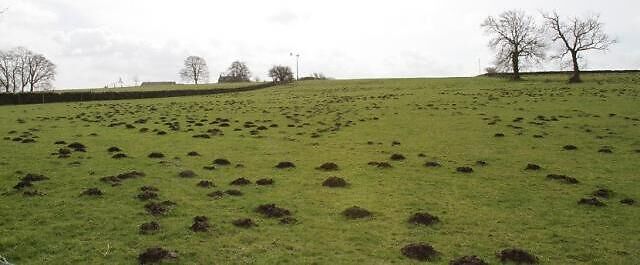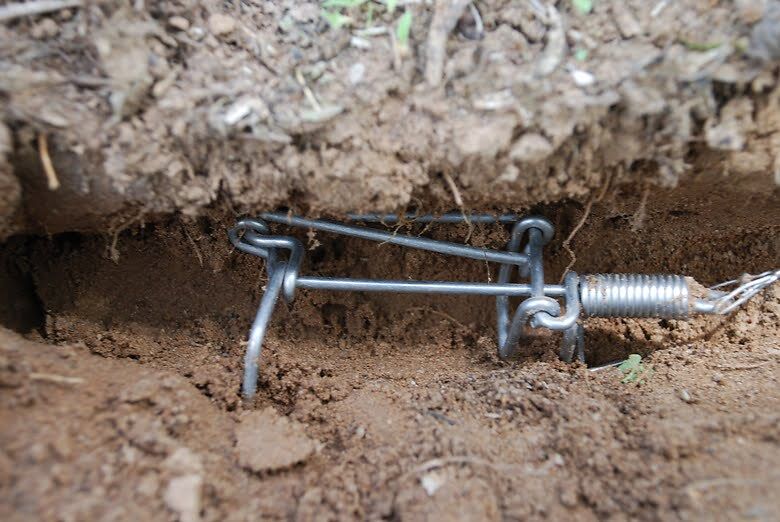About Nuisance Moles
No matter where you go in the world, you’ll find moles. These small mammals have earned their reputation as garden pests because of the intricate tunneling systems they build. Despite their reputation as blind, they do have sight. However, since they live underground most of the time, many people incorrectly believe they have no need to see.

Biology
Body
With no visible exterior ears, this mostly round mammal has small eyes and a pointed hairless snout. From the tip of the nose to the end of the rump, moles average 11.3 to 15.9 centimeters in length. Tails are typically between 2.5 to 4 cm long, and they weigh 72 to 128 grams.
Diet
You may have heard that moles feed on plant roots. That isn’t accurate — moles tunnel for the earthworms that live inside garden soil. In fact, they typically eat their weight in worms every day.
Breeding
Male moles increase their tunneling efforts during the breeding season to increase their access to females. If they are successful, dry plant material is transported into a round nest for their young.
Mole babies are hairless and are born in litters of three to four. The pups start growing hair when they are two weeks old. By age four or five weeks, the young are already weened and start leaving the nest. Mole lifespans are three years on average.
Problems They Cause
Molehills are the first sign that you have moles living in your area. Molehills are the result of digging tunnels and removing the dirt. They are found on lawns and within garden beds. These tunnels disturb plant and seedling roots throughout vegetable and garden beds, making it difficult for your garden to thrive.
Moles dive deep into the ground, digging deeper than their cousin, the vegetarian vole. They spend most of their time inside of their tunnels, which are generally at least 10 inches below the surface. Digging at that depth helps them to find the grubs, insect pests, and earthworms they crave. You won’t see a mole above ground unless it’s scouting for a potential mate.
Look for ridges or other signs of surface tunnels. Deeper tunnels are marked by swelling throughout your yard shaped like small volcanos.
Once moles reach your garden, they create a network of shallow tunnels. When you water, those tunnels often collapse and destroy young plants or seedlings with them. When roots dangle in the open space of a tube, they experience stunted growth and are unlikely to thrive.

Prevention Methods
Keep in mind that mole damage is often mistaken for the damage caused by wild field mice. Look for signs of moles before jumping to the conclusion that moles are wreaking havoc in your yard.
If you notice an uptick in the population of bugs and grubs, you may have an emerging mole problem. Even if you reduce the grub population by introducing beneficial nematodes, it’s unlikely to impact the mole population since grubs are only a small portion of the mole’s diet. However, there are ways to protect at least some of your plants while working out a plan to eliminate your problem with moles.
Physical Barriers
Before planting, dig the hole, line the bottom and sides of the hole with wire mesh, and then plant. You have created a physical barrier to the mole.
This method also works well if you plan on planting bulbs. The wire mesh should have a quarter-inch screen, and it will keep rodents out while allowing the roots to leave the encased area.
Trapping
To rid your land of moles, you can choose between baits and repellents. However, if your garden is overrun with moles, you should consider trapping. It may be the only solution that works.
Trapping is done in a humane manner using specially designed traps. Once captured, the captive moles can be released many miles away from your home. Of course, the best solution is to head to a rural area many miles from other gardens so someone else won’t inherit your problem.

Professional Removal Tactics
Choosing a professional service to eradicate the moles living in your yard may be the best choice. You won’t have to educate yourself and suffer through many different trials since they are the experts in the field.
Why Choose a Professional
Moles are experts when it comes to tunneling. A healthy individual can create 18 new feet of tunnels every hour. This fact makes finding and acting upon an emerging mole problem as soon as possible an important goal. Once they have expanded their tunnels in your yard, it becomes increasingly unlikely that moles can be caught. Professionals understand mole ecology and set up large numbers of humane traps to eradicate the problem.
The cost of hiring a professional to eliminate a mole problem pales in comparison to the potential damage they can cause. The pros have spent years learning how to deal with moles, which makes choosing them the best option.
